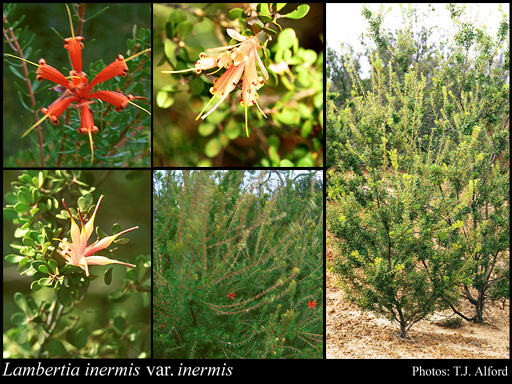- Conservation Code
- Not threatened
- Naturalised Status
- Native to Western Australia
- Name Status
- Current
Erect, spreading, non-lignotuberous shrub or tree, to 6 m high. Fl. orange-red, Sep to Dec or Jan to Jun. Dry brown gravelly loam, white-grey sand, granite, laterite. Sandplains, hillslopes, rock outcrops, ridges, stony sites, roadsides.

Scientific Description
Shrubs; branchlets glabrous or hairy. Leaves whorled, 15-30 mm long, 2-10 mm wide, hairy; lamina flat, entire, the margins flat or recurved; apex obtuse. Inflorescences orange; innermost bracts 20-28 mm long. Perianth 49-52 mm long, glabrous; pistil 50-55 mm long, style glabrous. Flowers in January, February, March, April, May, June, September, October, November or December. Occurs in the South-west (SW) Botanical Province(s), in the Avon Wheatbelt (AW), Jarrah Forest (JF), Mallee (MAL) or Esperance Plains (ESP) IBRA subregion(s).
Distribution
- IBRA Regions
- Avon Wheatbelt, Esperance Plains, Jarrah Forest, Mallee.
- IBRA Subregions
- Eastern Mallee, Fitzgerald, Katanning, Recherche, Southern Jarrah Forest, Western Mallee.
- IMCRA Regions
- WA South Coast.
- Local Government Areas (LGAs)
- Albany, Cranbrook, Denmark, Esperance, Gnowangerup, Jerramungup, Lake Grace, Plantagenet, Ravensthorpe.